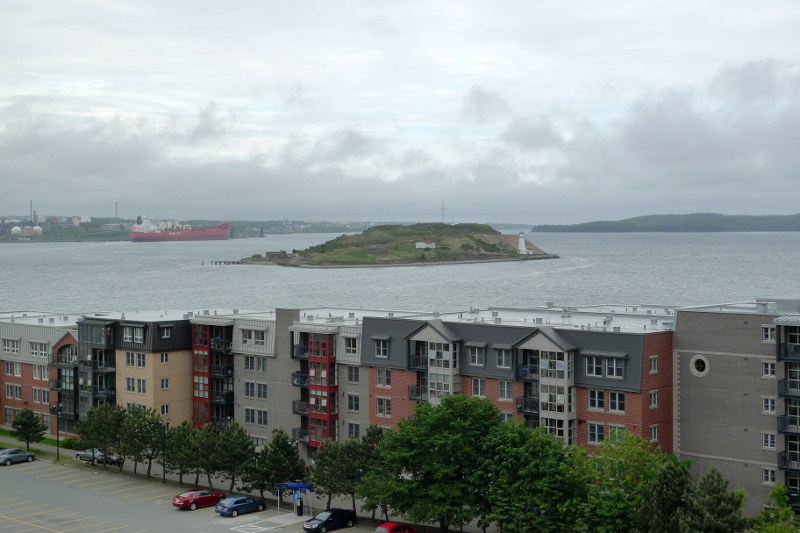For nearly two hundred years Georges Island was the scene of constant military activity. Tales of executions, forts and hidden tunnels surround the folklore associated with the mysterious island. — Park’s Canada [link removed]
There are a handful of small islands in the harbour that figure into Halifax’s history and folklore. I’ve written about these islands before… and drawn a map of where each sits in relation to Halifax.
The most visible and known of the islands is Georges Island, which is easily seen from the Harbourwalk. Known by French Explorers as île à la Raquette, it was renamed George Island in 1749 by the English in honour of King George II. Locals later added the “s” to the name (officially) because it had already entered the local language.
In its historical life, this little fortified island saw many prisoners including expelled Acadians and French sailors. All were housed in Fort Charlotte, which was built by Prince Edward Duke of Kent in 1798 (commandant of Halifax at the time) and named after Edward’s mother, Queen Charlotte. During the American Revolution, a contingent of soldiers was added to the island to protect the harbour from American Privateers.
Fort Charlotte became a National Historic Site in 1965. It’s currently not open to the public but is expected to become accessible sometime between 2012-2014 (no official date as of yet). Anyone wishing to visit the island must have permission from the Canadian Government. This is good for all the Melanistic Garter Snakes and wild blueberries that currently inhabit the island. These will most likely “disappear” when the island opens to tourists.
